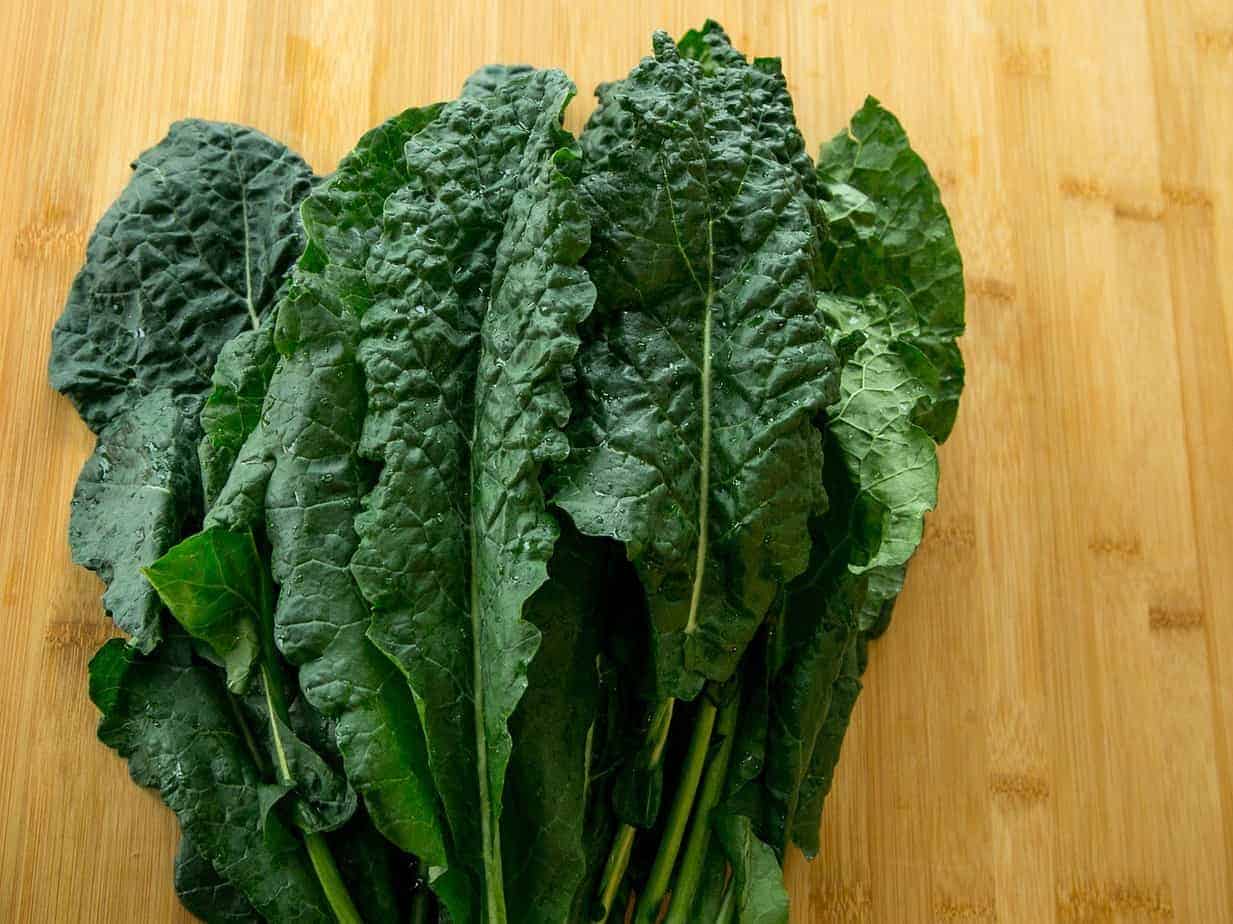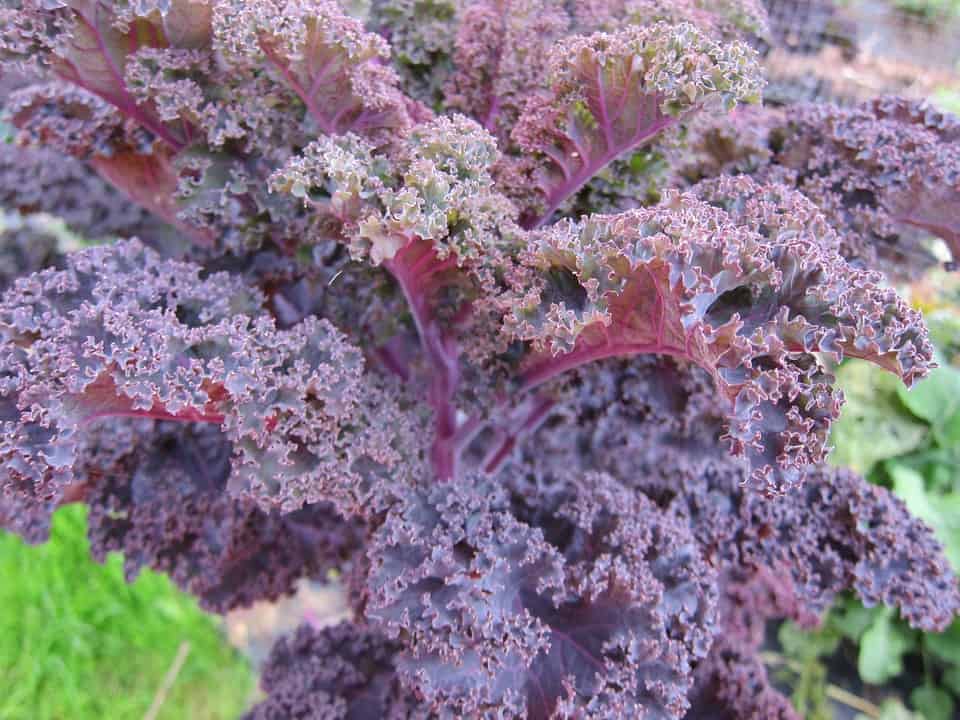I didn’t even know there was more than one type of kale. I always thought kale was just the frilly green leaves sold in bunches at the supermarket or in salad mixes. But as you get into gardening more, you realize there’s a great diversity of kale varieties, each with their own unique characteristics.
On this page:
Whatever Kale You Grow, Remember…
- You can direct sow kale seeds before your last frost, as long as the soil is workable. You can alternatively start indoors several weeks before your last frost and transplant outside.
- If you grow kale in containers, use at least a 2-gallon (7.5 L) container that is at least 12 inches (30 cm) deep for decent-sized kale. Aim for 5 gallons if you have the space as some kale varieties can get quite large. Smaller containers will stunt your kale and also require more frequent watering, especially during hot weather.
- Kale is a moderate feeder compared to lettuce and requires a balanced or higher nitrogen fertilizer to encourage leafy growth. Use a slow-release organic fertilizer after transplanting. You can also apply a liquid fertilizer every 7-14 days during the growing season.
- Kale also has moderate light requirements and does best in 4-6 hours of direct sun. If growing indoors, run your grow lights for 10-18 hours a day.
- Harvest your kale regularly with the cut-and-come-again method by picking off the bottom leaves and leaving some leaves on top to continue growing.
How to Grow Curly Kale
Curly kale is the most common kale you can find in the supermarket and is also one of the most popular to grow. The most common types of curly kale come in green or blue-green, and sometimes purple. Curly kale tends to bush out significantly, so give it at least the standard spacing of 12 inches (30 cm) between each plant, if not more. If you grow curly kale in a 2-gallon container, it will likely be slightly stunted, so aim for 3-5 gallons if you want a full-sized plant.
How to Grow Tuscan Kale
 Tuscan kale, also known as Dinosaur kale and Lacinato kale, is a kale with long leaves and one thick central leaf vein, often taking on a dark green color, but with some varieties having purple or light green leaves. Use the standard spacing of 12 inches (30 cm) between each plant if growing in the ground or raised bed, as Tuscan kale’s narrower leaves won’t crowd out its neighbors like curly kale does.
Tuscan kale, also known as Dinosaur kale and Lacinato kale, is a kale with long leaves and one thick central leaf vein, often taking on a dark green color, but with some varieties having purple or light green leaves. Use the standard spacing of 12 inches (30 cm) between each plant if growing in the ground or raised bed, as Tuscan kale’s narrower leaves won’t crowd out its neighbors like curly kale does.
Tuscan/Dinosaur/Lacinato kale tends to have a milder, somewhat sweeter taste than curly kale. I grow all kinds of kale, but Tuscan kale is my personal favorite; it tastes great, it’s easier for me to check for pests, and mature plants look like mini palm trees in my garden.
How to Grow Red Russian Kale
Red Russian kale, also known as Ragged Jack, is a less common kale but it’s becoming more popular in the culinary scene. Red Russian kale looks very different from Tuscan and curly kale, having jagged oak-shaped leaves.
This kale can grow massively if even enough space, so either space it more than the standard 12 inches (30 cm) or plant them 12 inches apart and then thin them out as the plants start crowding each other out. If growing in a container, 5 gallons (7.5 L) is highly recommended. Red Russian kale is mild and a little sweet like Lacinato kale but some say it has a richer complex flavor.
How to Grow Chinese Kale
Another less common type of kale among gardeners is Chinese kale, but it’s actually not unusual to find it in Asian supermarkets as “gai lan” or “kai-lan”. It is the same species as kale, but grows more like a leafy broccoli with tiny flower bud clusters (florets) and a thick, delicious stem.
Because it doesn’t have much of a bushy growth habit, you can plant Chinese kale closer, about 6-10 inches apart. Grow Chinese kale the same way you would grow other kales, but as it’s grown for its florets as well as its leaves and stem, switch from a balanced or high nitrogen fertilizer to one with more phosphorus as the plant matures to promote healthy floret development.
How to Grow Purple Kale
 Purple kale is just a purple version of one of the above kale varieties, such as Redbor kale (curly) and Dazzling Blue Kale (Tuscan/Dinosaur/Lacinato). They generally have purple leaves, purple stems, or are all purple. Purple kales have no special requirements; grow your purple kale exactly as you would green kale.
Purple kale is just a purple version of one of the above kale varieties, such as Redbor kale (curly) and Dazzling Blue Kale (Tuscan/Dinosaur/Lacinato). They generally have purple leaves, purple stems, or are all purple. Purple kales have no special requirements; grow your purple kale exactly as you would green kale.
